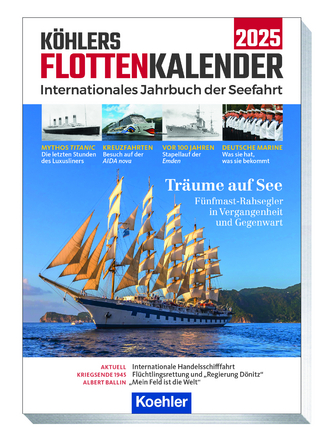
Building the Greenland Kayak
McGraw-Hill Contemporary (Verlag)
978-0-07-139237-2 (ISBN)
Take to the water in style for less than $300 and a few weekends and evenings of work. Simplicity, elegance, performance, and speed: these are the hallmarks of the Greenland kayak. Its low profile minimizes windage, and its narrow beam makes it well behaved in rough water and fast. Despite its ancient origins, the Greenland kayak is lively, versatile, and responsive even by modern standards. "Building the Greenland Kayak" leads you step-by-step through the process of crafting your own lashed-frame, fabric-covered, custom-fitted Greenland kayak, using inexpensive, easy-to-find materials and common woodworking tools.Master boatbuilder Christopher Cunningham provides plenty of tips and pointers to help you build a kayak that is strong, flexible, and perfectly scaled to your dimensions.
Great for the accomplished boatbuilder and the novice alike, this easy-to-use manual includes: easy-to-follow building instructions accompanied by hundreds of photos; complete lists of all the tools and materials you'll need; detailed primers in lumber milling, fastening, rib bending, and measuring; additional instructions for making a Greenland paddle, paddling clothing, float bags, skegs, and more; and pointers on paddling skills, kayak rolling, and children's kayaks.
Christopher Cunningham has been the editor of Sea Kayaker magazine, America’s leading sea kayak publication, since 1989. His father first took him paddling at the age of 4 or 5. He rebuilt his first kayak in the early 1970s and has been building kayaks since 1979. He taught Greenland kayak construction at the WoodenBoat school for three years, with seven students each year producing their own kayaks. He has built four 1:5 scale models of traditional kayak frames for the Alaska State Museum and was featured building a Greenland kayak in a one-half hour episode of “Craftsmen of the World” for Japanese Public Television. Chris has twice rowed up the Inside Passage from Washington to Alaska, paddled 2,500 miles from Canada to the Gulf of Mexico, and rowed 2,400 miles from Pittsburgh to Florida. HOMETOWN: Seattle, Washington
AcknowledgmentsIntroduction1. The DesignThe Greenland Design as a Recreational KayakAnthropometric Measurement2. ToolsCircular Saw BladesDrill BitsKeeping Your Tools SharpThe Art of the JigThe Steam BoxSafetyWood DustSafety Glasses and Hearing ProtectionOn the Water3. MaterialsWoodGrain OrientationBending StockFabricDeck LinesDeck Fittings4. FasteningsLashing MaterialKnots and LashingsThe Eskimo KnotThe Water KnotLashingsTrunnels5. MillingRippingRipping Gunwales to ThicknessStationary Circular Saw Ripping JigRipping on a Table SawPlaningWedge Bench HoldfastMachine PlaningScarfingGlue ScarfsTraditional Scarf JointsHooked Scarfs for Chines and Keelson6. Getting StartedLaying Out the GunwalesBuilding Forms7. The FrameworkOrienting the GunwalesMarking the GunwalesCutting Rib MortisesMortising by HandMortise MachineRouter MortisingShaping the GunwalesCutting the Deck Beam MortisesMortising by HandMortise MachineBeveling the GunwalesThe Building FormsBeveling the Gunwale TipsHollowing the SheerPreparing for Deck BeamsStraight Deck BeamsCutting the Straight Deck Beams to LengthMarking the TenonsArched Deck BeamsCutting TenonsCutting Tenons on Arched Deck BeamsCutting Tenons on Straight Deck BeamsTest FittingAn Alternative to Mortise-and-Tenon Joints for the Deck BeamsAssembling the GunwalesLocking the Gunwales and Deck BeamsTrunnels to Join the Ends of the GunwalesPegging the TenonsDeck Beam Lashings8. The HullThe Rib GaugeCutting Ribs to SizeThinning the Ends of the RibsThe JointerThe Router TableThe Table SawHand ToolsThe Bending JigSteaming and BendingPinning the RibsBow and Stern BlocksAttaching the KeelsonAdjusting the Sheer and RockerPegging the KeelsonTrimming the Ends of the KeelsonCentering the KeelsonFairing BlocksThe Running LashingRunning Lashings Through HolesChinesPositioning the ChinesLashing the Chines9. Finishing the FrameStem PlatesMasikThe Masik PatternNaturally Curved StockA Laminated MasikStraight-Grained StockA 3-D Template for the Masik NotchesInstalling the MasikDeck RidgesTrial RunOiling the FrameThe Cockpit HoopThe Coaming FlangeFloorboards10. Skinning the KayakPulling Longitudinal TensionPulling Transverse TensionWorking SoloWorking with a PartnerThe DecksStretching the DecksSewingInstalling the CoamingLacing the CoamingCoatingsAircraft DopeTwo-Part Urethane11. Deck FittingsLeatherBeadsSlidersDeck-Line Placement12. The PaddleLaminating a Paddle BlankShaping the PaddlePaddle ArmorTapering the BladesRounding the ShaftTrimming the Blade EdgesOiling the PaddleMy Paddle ModificationsStorm Paddles13. ClothingThe TuilikThe PatternCutting the PiecesSewingSpray SkirtThe Spray Skirt Pattern14. Float Bags, Hunting Equipment, and SkegsFloat BagsHeat-Sealable FabricTraditional FloatsTowing FloatHunting FloatThe Rolling StickSkegsStrap-On SkegsA Hybrid Skeg15. Eskimo RollingCapsizing in ComfortWet ExitHip BracingSwimming with the KayakScullingSculling Back BraceSculling Chest BraceDeep ScullingBalance BraceForward Extended RollBackward Sweep RollSaving RollsWindow-Shade RollFloat RollsHunting-Float RollTowing Float RollThrowing-Board Roll16. Getting In and PaddlingGetting AboardEntry from a Steep or Rocky BeachEntry from a DockRough-Water LaunchingLandingThe Forward StrokeThe Sliding Stroke17. Variations of the Greenland KayakThe Rolling KayakThe Folding KayakKid's KayakRockersBalance StoolBalance SacksAppendixMaterials ListMetric Conversion FactorsSources of SuppliesBibliographyIndex
| Erscheint lt. Verlag | 16.1.2003 |
|---|---|
| Zusatzinfo | 15 Illustrations |
| Verlagsort | London |
| Sprache | englisch |
| Maße | 198 x 236 mm |
| Gewicht | 361 g |
| Themenwelt | Natur / Technik ► Fahrzeuge / Flugzeuge / Schiffe ► Schiffe |
| Sachbuch/Ratgeber ► Sport ► Segeln / Tauchen / Wassersport | |
| Technik ► Fahrzeugbau / Schiffbau | |
| ISBN-10 | 0-07-139237-8 / 0071392378 |
| ISBN-13 | 978-0-07-139237-2 / 9780071392372 |
| Zustand | Neuware |
| Haben Sie eine Frage zum Produkt? |
aus dem Bereich


